Oppo Reno 2 Review
Oppo Reno 2 Review
A high-quality, good performer that could offer serious competition to more expensive rivals
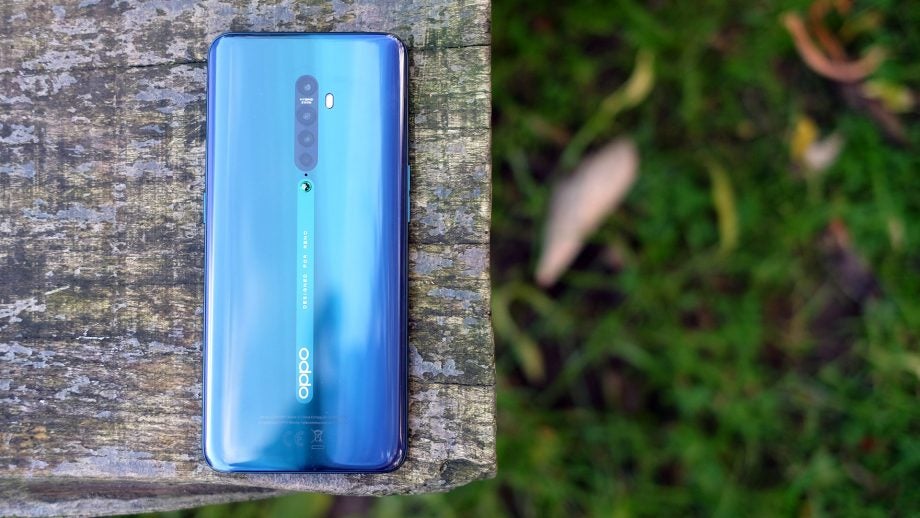
Verdict
A high-quality phone that performs well enough in all areas to offer serious competition to more expensive rivals.
Pros
- Big, hole and notch-free screen
- Good-looking glass and metal shell
- Solid value
- Has a headphone jack
Cons
- Xiaomi offers more power at the same price
- Portrait mode is restrictive
- Night mode is unsubtle
- ColorOS 6.1 UI is not the best-looking around
Key Specifications
- Review Price: £449
- Snapdragon 730G CPU
- 256GB storage
- 8GB RAM
- 6.5-inch 2400 x 1080 pixel OLED screen
- Android 9
- ColorOS 6.1
- 4000mAh battery
- 48MP, 16MP, 8MP and 2MP rear cameras
- Motorised front camera
What is the Oppo Reno 2?
The Oppo Reno 2 is a mid-range phone that more-or-less provides everything you might ask for from a higher-end model. It looks and feels expensive, has five cameras, an excellent screen and in-screen fingerprint scanner.
Why might you choose to pay more? Some phones have more powerful processors, although the actual difference won’t seem huge for many. The camera is good but not class-leading. And Oppo’s ColorOS software won’t please everyone.
However, if you want some high-end class while spending less than phones like the OnePlus 7T and Samsung Galaxy S10e cost, it’s a great choice.
Related: Best phone 2019
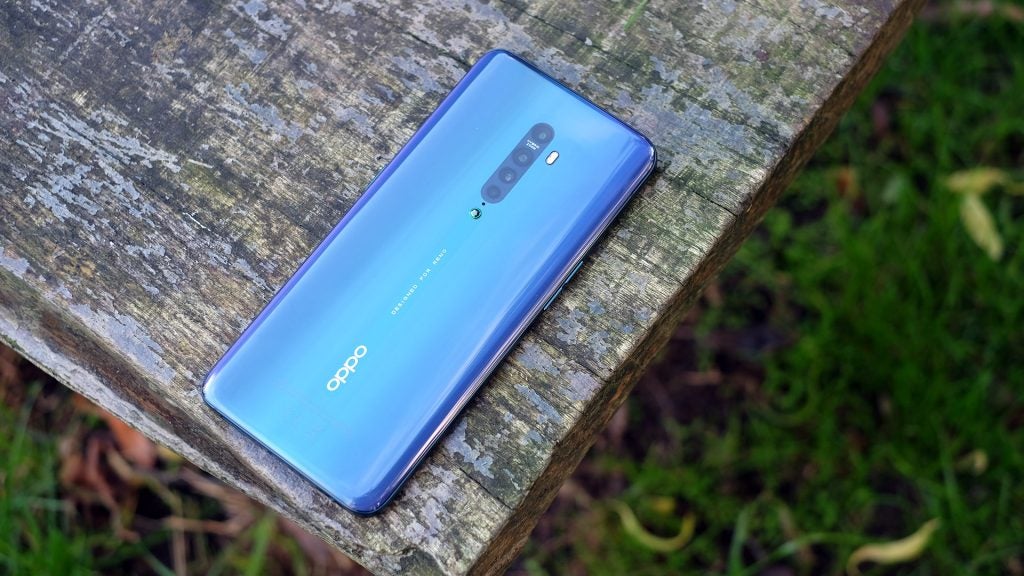
Oppo Reno 2 Design – A sleek and classy finish, with a headphone jack and pop-up camera
Only one design motif separates the Oppo Reno 2 from phones in the £800-1000 range. It’s curved front glass. This is used by companies like Samsung and Apple to make their expensive phones look and feel more expensive, and it works.
The real benefit? Curved front glass tends to make a phone seem thinner than it is. And the Oppo Reno 2 feels relatively thick, but it has a trick to improving the feel too. The phone actually tapers slightly top-to-bottom, from 9.5mm thick to 8.5mm.
If it was 9.5mm all the way down, it would feel outright chunky, but I think it’s more-or-less a delight. The curved Gorilla Glass on the back is smooth and hard, and has that unmistakeable cool feel of glass when you pick it up, having left it out of your pocket for a while.
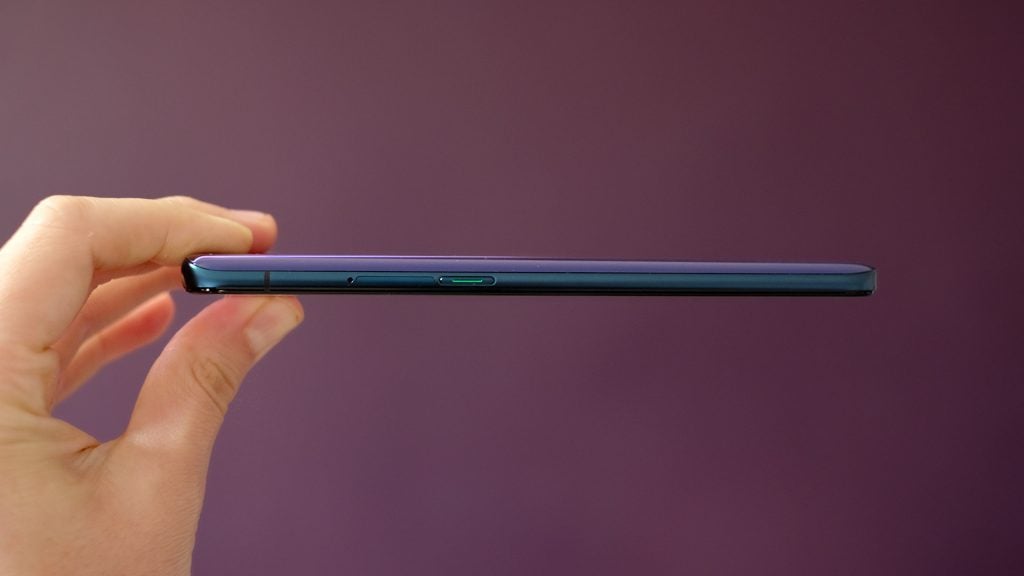
Oppo’s finishes are classy too. This version is Ocean Blue. The Oppo Reno 2 also comes in a light “Sunset” pink and black.
You’ll notice the cameras do not protrude at all, like those of the last Reno. The rear glass functions as the outer camera lens cover. This is why there’s a little metal dimple below those cameras. It stops the camera glass from touching any flat surfaces you rest the Reno 2 on, while only causing a tiny bit of wobble.
The Oppo Reno 2 is one of the best-looking phones at the price, and it feels more high-end than most too. But there are lots of nods to plain and practical considerations too. The Reno 2 has a great factory-applied screen protector and comes with a faux-leather clip-on case.
Using it obliterates most of the effort put into making the Reno feel fancy, but you probably should use it. Even Gorilla Glass, used here, will pick up scratches. There’s also no official water resistance. Don’t drop it in the bath.
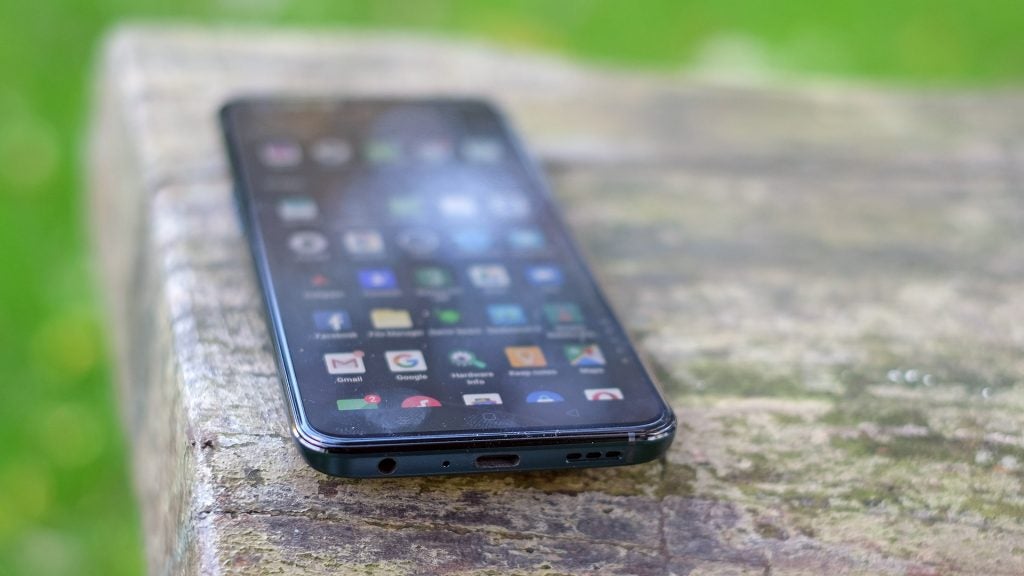
The Oppo Reno 2 also has a headphone jack, missing from almost every phone as fancy as this one.
There’s a very fast optical fingerprint scanned embedded in the screen. And, like the Reno and OnePlus 7 Pro, the pop-up front camera is fast enough to make the snappy face unlock mode a viable option.
This front camera is perhaps the primary part of the Reno series’s visual personality. It’s a wedge of metal that pops up like a shark fin when you use face unlock or the selfie camera. As Apple and Samsung still use non-motorised designs, this style still has a charming novelty to it.
Related: Best Android 2019
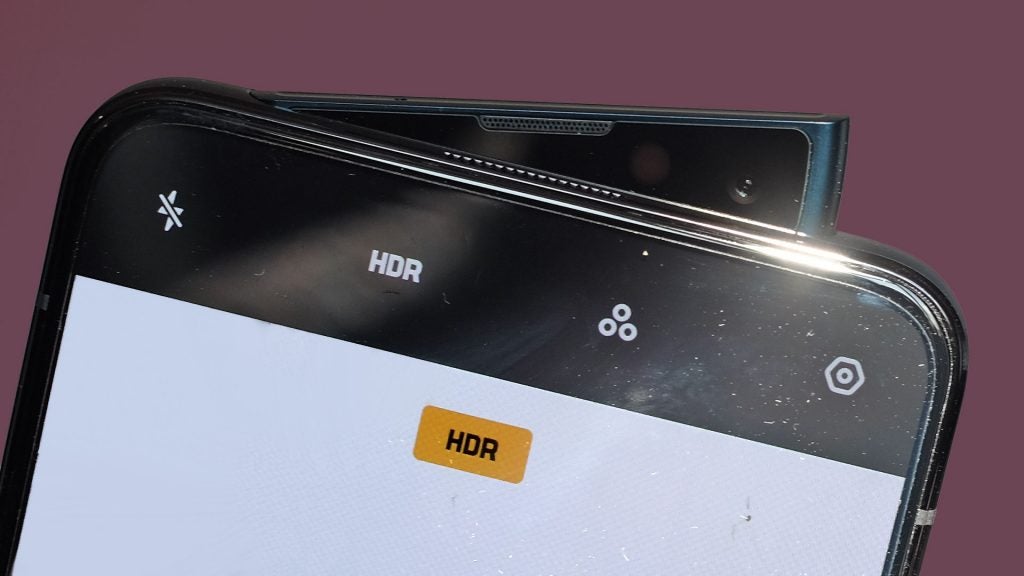
Oppo Reno 2 Screen – Notch-free and Netflix HD-ready
The front camera also leaves the 6.5-inch screen free of any holes or notches. This is a huge advantage for video streaming, as notches and the black blobs of punch hole screens are always distracting.
The Oppo Reno 2 is a brilliant Netflix phone. And unlike the cheaper Reno 2 Z, it is certified for Netflix HD streaming at launch (like other Androids this means Netflix plays at 720p).
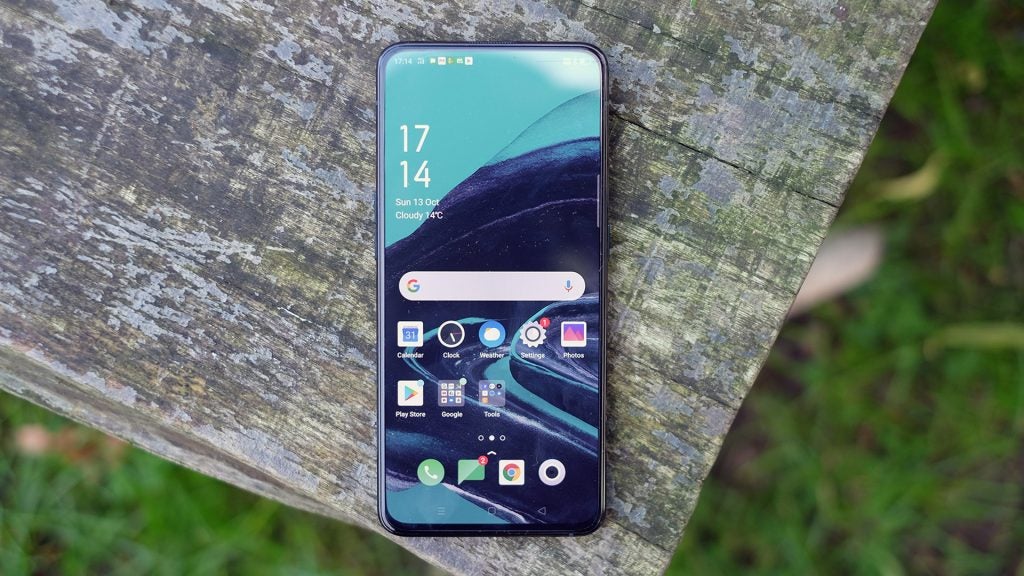
There’s very little to complain about on image quality either. The Oppo Reno 2 has a 2340 x 1080 pixel AMOLED screen. Its emissive pixels mean blacks look pitch black even if you watch in a room darker than a cinema, and great colour depth is here, if you want it.
The phone has two colour modes – Gentle and Vivid. Gentle is based on the sRGB colour standard, so is less bold than the norm, but does tend to result in more natural-looking skin tones. Vivid boosts colour, giving images a bit more pop and power. Both look great, and simply cater for different tastes.
Peak brightness does not match, say, a Samsung Galaxy Note 10’s ~700 nits. But the Reno’s ~500 nits is enough to make the screen look fairly clear on bright days.
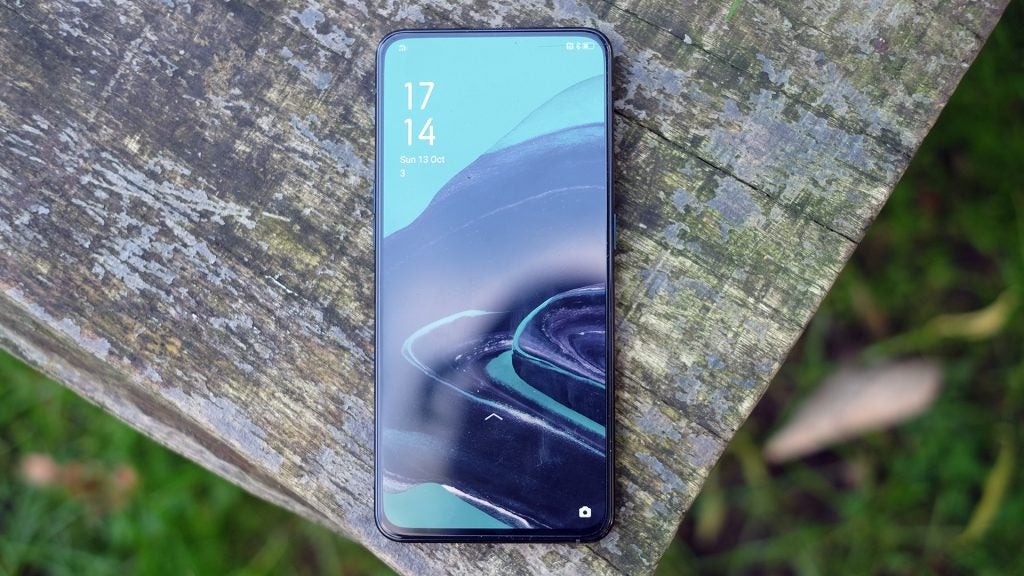
Oppo Reno 2 Software – ColorOS won’t be for everyone
The Oppo Reno 2 runs Android 9 and Oppo’s ColorOS 6.1 interface. This is a big deviation from standard Android in some ways, and not so much in other ways.
There are standard homescreens, and you can choose whether to use an apps menu or not. Put the app screen back and a flick upwards takes you to it. It’s like “default” Android, before it became completely gesture obsessed and put the multi-tasking screen between your home screens and the app drawer.
However, ColorOS is a bit of a visual downgrade too. You have to use relatively severe square icons, not favoured by any other popular Android UI because they look quite stiff.
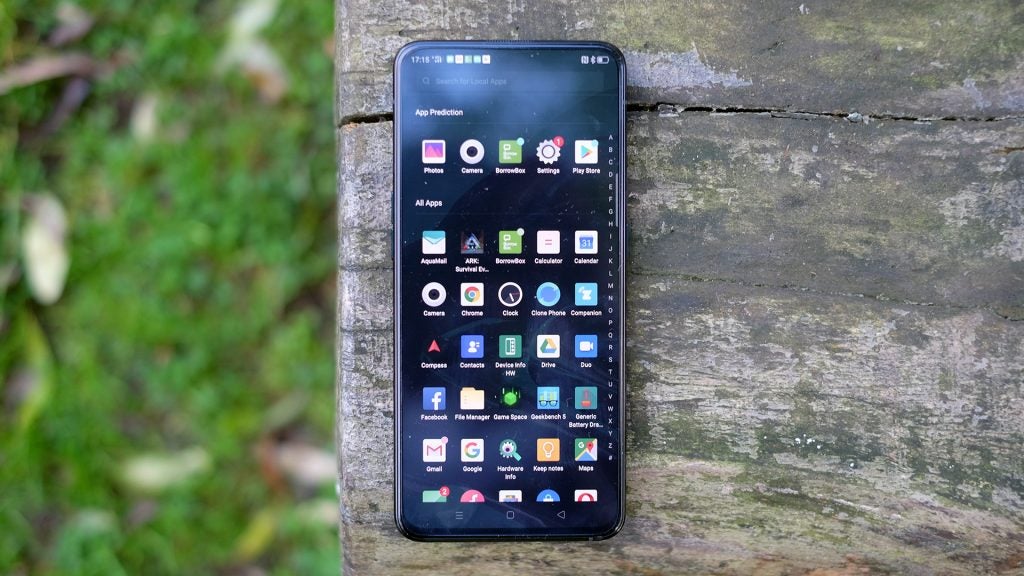
The Oppo Reno 2 does have themes that alter icon style, wallpapers and so on, five of them, but none changes the square icons.
ColorOS 6.1 also comes with few unwanted apps, the Opera browser and AquaMail. But most are less objectionable tools like a music player, and a “Clone” app, to let you copy data from your old phone.
There’s also a Smart Assistant home screen. This is a home for widgets, the kind of feature most people don’t need. But it could be useful if, for example, you want a place to see the weather or your daily step count without dumping them on your home screen.
ColorOS is far from my favourite Android UI. However, having used both the Reno 2 and Reno 2 Z recently, I have started to bed into its style, which has also improved significantly over the last couple of years.
Related: Which Oppo phones will get Android 10 − and when?
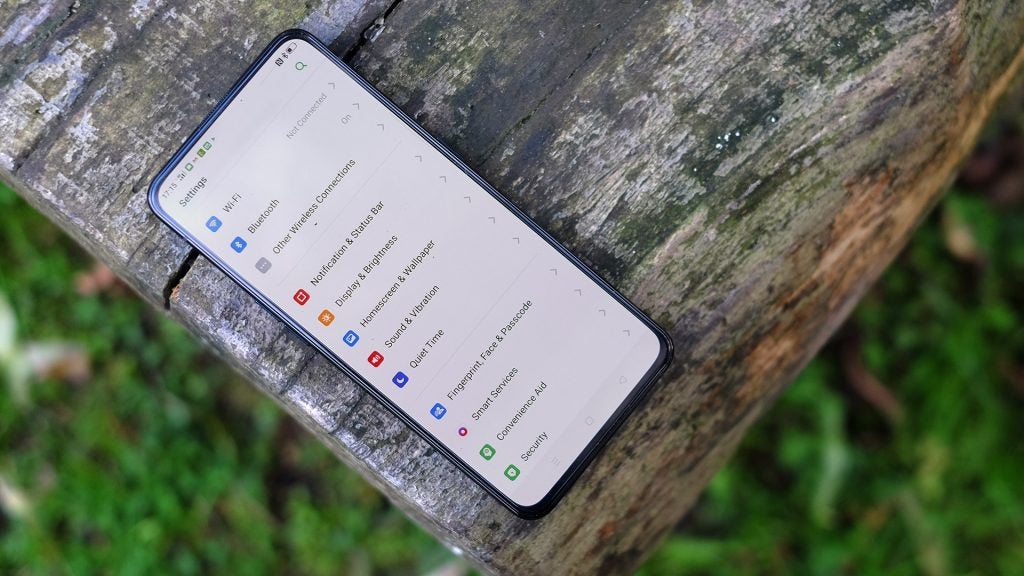
Oppo Reno 2 Performance – Impressive power for a mid-range price
The Oppo Reno 2 has a Snapdragon 730G processor. This is a mid-range processor with a specific focus on mobile gaming (hence the “G”), which is handy given gaming is one of the few good reasons to pay more for a high-end CPU.
Snapdragon’s 730G has eight cores. Two are Kryo 470 Gold performance cores, the other six are Kryo 470 Silvers. The gaming side appears, obviously, in the GPU. This is an Adreno 618 just like the standard Snapdragon 730, but it’s overclocked by 15% for better performance.
How does it stack up? In 3DMark’s Sling Shot Extreme test the Oppo Reno 2 scores 2409 points (2263 using Vulkan). This is not even close to the 5600 points a Snapdragon 855 phone can achieve, but is a lot better than the Google Pixel 3A XL’s Snapdragon 670, which scores 1679 points (OpenGL 3.1).
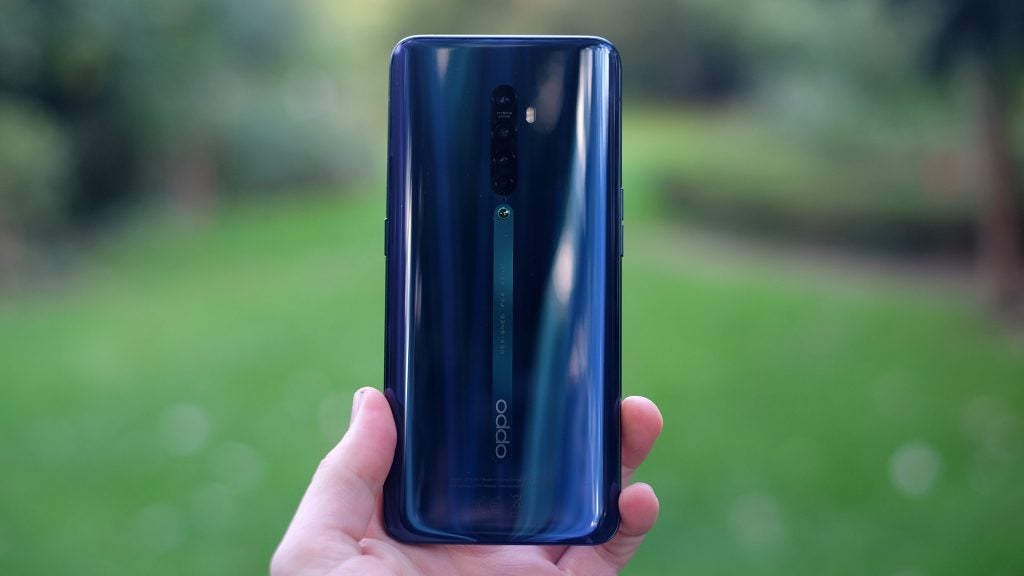
Real-world results are great too. The Oppo Reno 2 can comfortably play Ark: Survival Evolved maxed-out, a very taxing job. Sure, the frame rate isn’t quite as high as that of a Snapdragon 855 phone and there are a few dips occasionally. But it’s more than playable.
PUBG runs very well with the max available settings too. The Oppo Reno 2 gets you pretty close to the experience of a top-end Snapdragon phone, without actually having top-end hardware. It also has 256GB storage – a lot.
However, if you’re willing to try a brand like Oppo, why not another Chinese one such as Xiaomi? Its Xiaomi Mi 9T Pro has a much more powerful Snapdragon 855, and can be found for £399 at the time of publishing.
Related: Best mid-range smartphone 2019
Oppo Reno 2 Camera – A few niggling issues, but otherwise a largely great snapper set up
The Oppo Reno 2 has a compelling camera line-up. There’s a very good motorised 16-megapixel front camera and four on the back.
These are a 48-megapixel Sony IMX568, a 13-megapixel 2x zoom, 8-megapixel ultra-wide and a 2MP depth camera. A little button that changes the field of view cycles between the three main focal lenghts, and a 5x hybrid zoom. You can also use digital zoom to get all the way into 20x, but these images look poor.
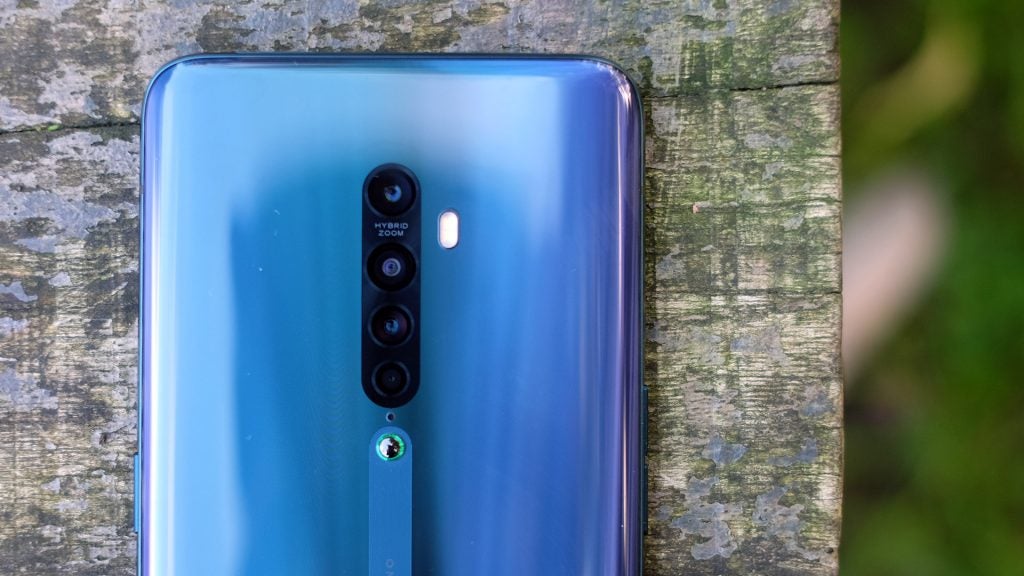
This is an upgrade over the lower-end Reno 2 Z, as it does not have a true zoom camera. You can zoom in and get more detail, zoom out for a dramatically scene-distorting view.
But the Oppo Reno 2 also highlights the remarkable work Google did with the camera of the Pixel 3 and Pixel 3A range, in direct comparison.
A phones with a good-quality zoom, like the Huawei Mate 30 Pro, will produce much better zoomed images than the Pixel. The Oppo Reno’s zoom camera is only OK, though, and its results at 5x zoom only produce, at best, only slightly more detail than the software enhanced Pixel 3A XL. The Oppo images are also noisier and have significantly worse dynamic range in lower light.
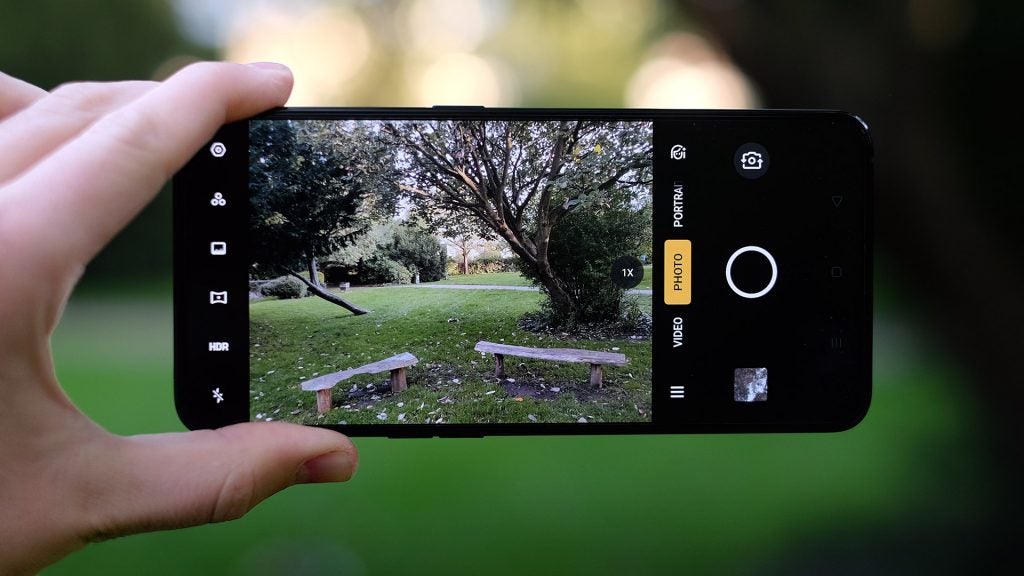
Night shots at 1x zoom also have less detail than the Pixels, despite a sensor that, on paper, only has a quarter the resolution (the Pixel 3A has a 12MP sensor).
However, let’s not hit the Oppo Reno 2 too hard. To get close to the Pixel 3, and the Reno does, is a real achievement in itself. The quad camera array means buyers are more likely to use the different focal lengths on offer, and it has one the Pixel does not – the ultra-wide. Here’s an example of the shots you can get from one position:

Ultra-wide
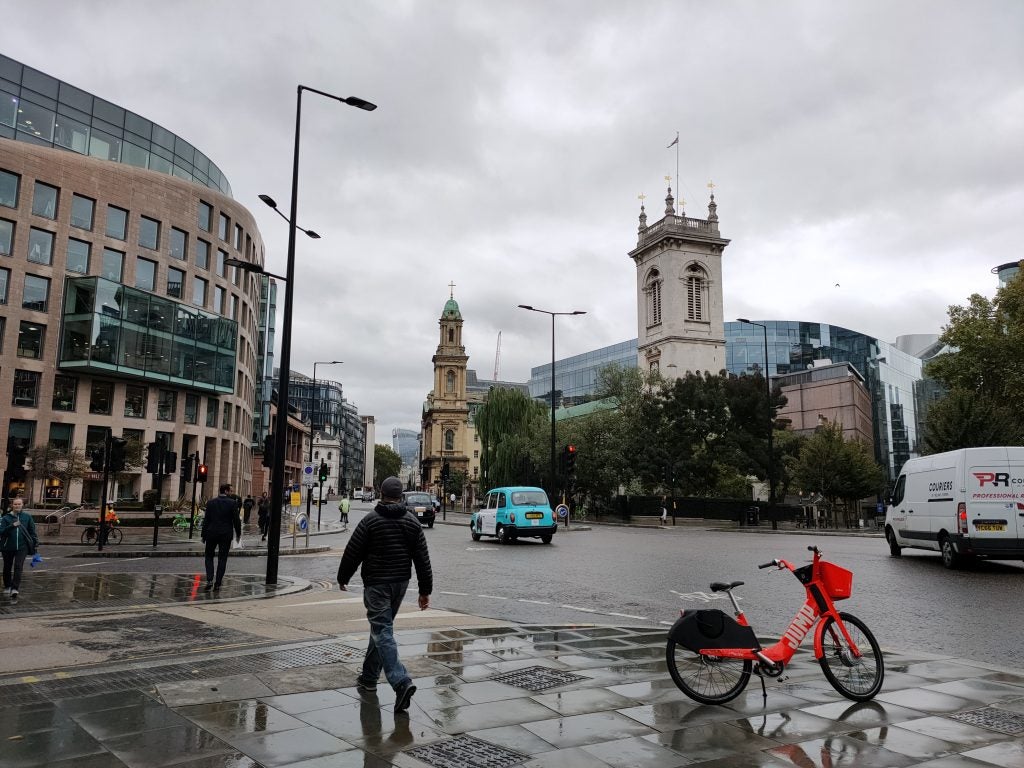
1X view

Zoom

5X zoom
The ultra-wide doesn’t have the raw detail of the main camera, but the 48-megapixel can produce lots of detail in such conditions, even though it actually shoots 12-megapixel images. Like every ultra-high resolution phone camera, it uses pixel binning, where sensor pixels are combined to effectively increase light sensitivity. Unusually, the Reno 2 doesn’t let you take pics at 48-megapixel resolution.
The Oppo Reno 2’s night mode is also good, just not the best around. It brightens images so they are lighter than they appear to the naked eye, and each shot only takes a couple of seconds.

Standard mode

Night mode
As you can see, it’s highly effective. But it isn’t subtle, tending to flatten the dynamics of an image, and does not actually recover as much detail as some. Just look at the back quarter of the church. It’s far brighter in the enhanced photo, but the brickwork texture is still mushy. I’m sure the Reno 2 could do better if there was an option to extend the “exposure” time for night mode, but there isn’t.
I’ve picked a few holes in the Reno 2 camera, but it’s largely great. Dynamic range enhancement is great, it handles night conditions fairly well, and having 5x zoom and an ultra-wide on hand is a huge bonus.
Portrait mode is the one part I think should be better. This lets you take photos with a blurred background. It’s too picky about the distance of your subject, and the results aren’t great anyway.
Even with a depth sensor, portrait modes like this rely on algorithms that separate foreground from background, and Oppo’s seem behind the times.

Portrait mode

Portrait mode
Here are a few more sample images:
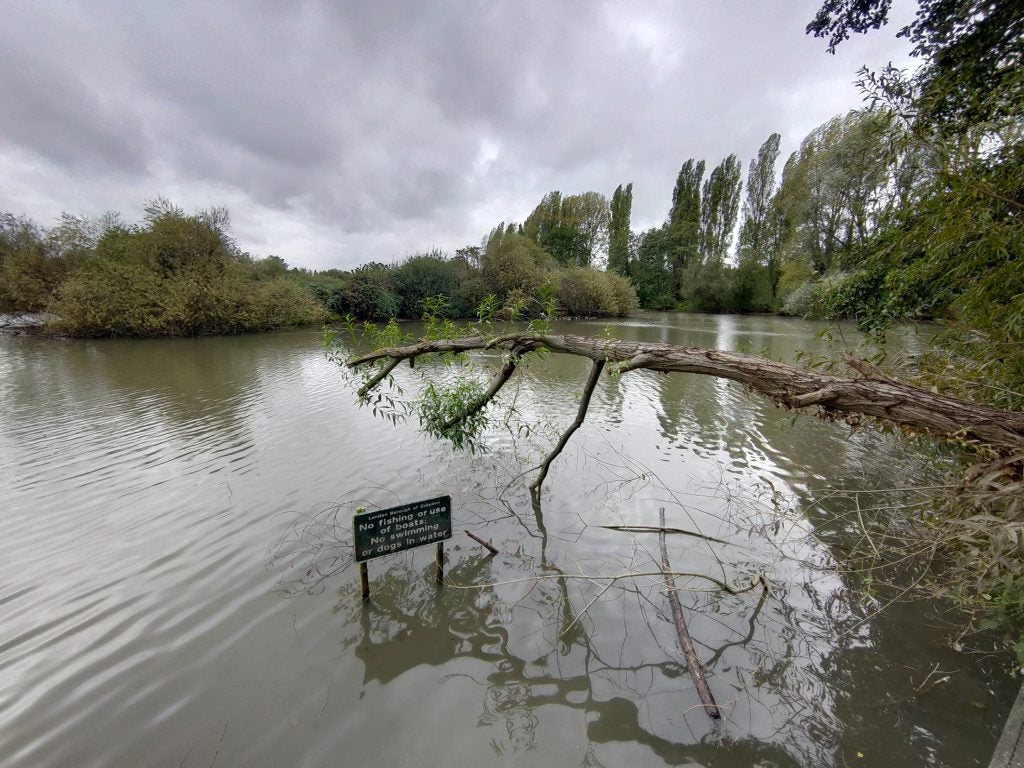
Ultra-wide
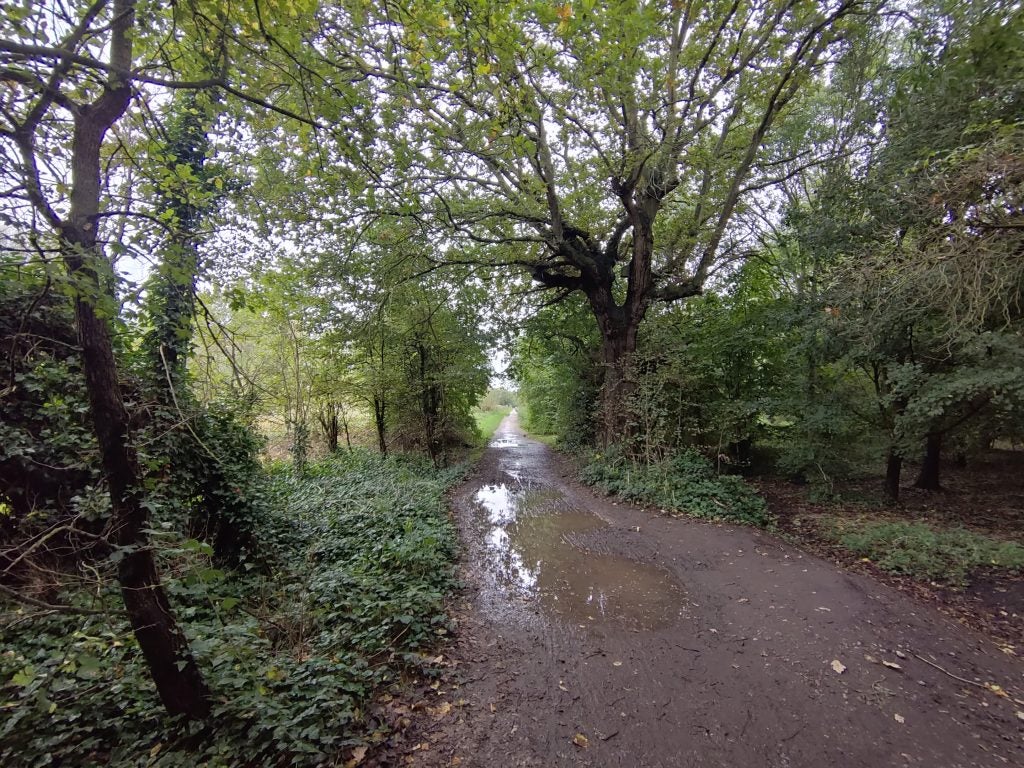
Ultra-wide

1X

2X zoom

5X zoom

~12X zoom

1X view

1X view

5X zoom
You can shoot video at up to 4K resolution, 30 frames per second, or 1080p, 60 frames. 4K video is stabilised too, although the Oppo Reno 2 eats into the field of view a lot to do so. As a result, stabilisation effectiveness is very good.
Related: Best camera phone 2019
Oppo Reno 2 Battery life – Excellent fast charging and impressive stamina
The Oppo Reno 2 has a 4000mAh battery, just like the Reno 2 Z. Oppo says its VOOC fast charging will get you from zero to 50% in a half-hour. I tried it from flat, the phone off, and it made it to 47% in 30 minutes.
This may be a tiny bit off the claim, but the charging speed is still excellent. Its makes those quick mid-afternoon top-ups a breeze. Just 10 minutes or so gets you a significant boost.
Real-world battery stamina is good, but doesn’t quite match the top Huawei phones with similar capacity. Oppo’s power management doesn’t seem quite as frugal, which makes the phone easier to drain to below 20% by the time you go to bed. This is after a reasonably heavy day of use, though, and you can rely on the phone to last a full day.
An hour of streamed Netflix takes just 6% off the battery, suggesting it will last for 15-16 hours of streaming. No complaints there.
Should I buy the Oppo Reno 2?
The Oppo Reno 2 is a solid mid-range phone that is particularly good for movie streaming thanks to its big notch-free screen. This also makes it a top candidate for games, although the Xiaomi Mi 9T Pro offers more power at a similar price.
And the rest? As you might expect, it doesn’t quite match up to phones twice the price, but it performs well enough in all areas to make it a better choice than those models for many.
The camera is versatile, even if its zoom and night modes don’t trouble those of the Pixel 4 XL and Huawei Mate 30 Pro. And it earns extra points for its fast in-screen fingerprint scanner and 3.5mm headphone jack, which smooth-out day-to-day use.
Verdict
A high-quality phone that performs well enough in all areas to offer serious competition to more expensive ones.
How we test phones
We test every mobile phone we review thoroughly. We use industry standard tests to compare features properly and we use the phone as our main device over the review period. We’ll always tell you what we find and we never, ever, accept money to review a product.


